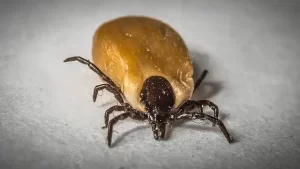Nature Cancer: Radiotherapy makes neutrophils promote cancer?
- Engineered Soybeans with Pig Protein: A Promising Alternative or Pandora’s Dish?
- Severe Fever with Thrombocytopenia Syndrome (SFTS): A Tick-Borne Threat with High Mortality
- Why Isolating Bananas Extends Their Shelf Life?
- This common vitamin benefits the brain and prevents cognitive decline
- New report reveals Nestlé adding sugar to infant formula sold in poor countries
- Did Cloud Seeding Unleash a Deluge in Dubai?
Nature Cancer: Radiotherapy makes neutrophils promote cancer?
- Red Yeast Rice Scare Grips Japan: Over 114 Hospitalized and 5 Deaths
- Long COVID Brain Fog: Blood-Brain Barrier Damage and Persistent Inflammation
- FDA has mandated a top-level black box warning for all marketed CAR-T therapies
- Can people with high blood pressure eat peanuts?
- What is the difference between dopamine and dobutamine?
- How long can the patient live after heart stent surgery?
Nature Cancer: Radiotherapy makes neutrophils promote cancer? British scientists find that radiotherapy induces neutrophil tissue repair-related responses and promotes cancer metastasis丨Scientific Discovery
Currently, radiotherapy is one of the most routine and effective treatments for cancer patients, and about 60% of cancer patients receive radiotherapy [1].
With the change of radiotherapy technology equipment and imaging technology, the effectiveness and reliability of radiotherapy are getting higher and higher . Nevertheless, accidental injury to healthy tissue during radiotherapy is still inevitable.
Tissue damage first brings about an inflammatory response, but later on, tissue repair needs to be initiated. Tissue repair (regeneration) requires suppression of inflammatory immune responses, which is similar to the microenvironment of tumor immunosuppression . However, the relationship between the radiation damage-repair microenvironment and tumor metastasis remains unclear.
Recently, a research team led by Ilaria Malanchi of Queen Mary University of London published important findings in Nature Cancer.
They found that irradiation of healthy lungs of mice caused a large number of peripheral circulating neutrophils to infiltrate the injury site, generate a neutrophil response related to tissue repair, and activate lung epithelial cells mediated by Notch signaling pathway. Tumor lung metastases . Nexinhib20, a neutrophil degranulation inhibitor, or DAPT, a Notch inhibitor, can effectively inhibit neutrophil-mediated tumor metastasis .

Screenshot of the paper’s homepage
Previous research by Malanchi’s team showed that when breast cancer metastasizes to the lung, a kind of tissue regeneration occurs in the lung tissue [2]. Subsequently, Malanchi’s team analyzed the previous basic research and clinical research data, and found that in patients receiving radiotherapy, the phenomenon of tumor metastasis in the lung tissue on the same side of the breast cancer lesion is more common [3,4].
Therefore, Malanchi’s team wondered whether the accidental injury of healthy tissue by radiation therapy might contribute to the metastasis of tumor cells. If so, they also want to know what the molecular mechanism behind it is.
To answer this hypothesis, Malanchi’s team used acute lung injury caused by radiation (13 Gy) to the lungs , combined with a mouse model of transplanted tumor cells, to explore the relationship between healthy tissue damage and tumor metastasis.
After radiation -induced acute lung injury in mice, the researchers found that the number of tumors in the lungs of the mice in the radiation group increased 14-21 days after transplantation, whether the tumor cells were transplanted in orthotopic mammary glands or the tumor cells were directly implanted in the tail vein. , and lung tissue sections showed a sharp increase in the tumor area .
In order to rule out individual differences, they precisely irradiated the right lung of mice to cause damage, and then implanted tumor cells into the tail vein. The experimental data showed that the number of tumors in the right lung lobe of mice was significantly higher than that in the unirradiated left lung lobe.

a: Experimental procedure of lung irradiation/transplantation of tumor cells; bc: Radiation-promoted tumor cell metastasis;
j: Experimental procedure of radiation/transplantation of tumor cells in the right lung; k: There are more metastatic tumors in the right lung than the left
After radiation -induced acute lung injury in mice, Malanchi’s team also confirmed by staining tissue sections that radiation does indeed cause tissue damage, such as DNA breaks. In addition, they also found an unexpected finding: neutrophils entering the injured lung were significantly increased, and showed the morphology of inflammation-activated cells with multi-lobed nuclei and increased granule protein content.
To test whether infiltrating neutrophils are involved in promoting tumor cell metastasis to colonize damaged tissues, Malanchi’s team employed a positive and a negative strategy.
Let’s look at the first strategy first. From the day before the radiation until the end of the experiment, they gave the mice daily intraperitoneal injections of anti-Ly6G antibodies to deplete the neutrophils in the mice. After 7 days of radiation , they injected the mice with tumor cells through the tail vein.
Seven days after transplanting tumor cells, they found that depleting neutrophils effectively inhibited the growth of tumors that had metastasized to the lungs .
In the second strategy, they used G-csf (granulocyte stimulating factor) knockout mice as tumor transplant recipients. G-csf knockout mice were supplemented with GCSF by subcutaneous injection of exogenous recombinant granulocyte-stimulating factor (rGCSF) 4 times every other day starting from the day before irradiation .
After 7 days of radiation , tail vein tumor cell transplantation was performed. Seven days after transplanting tumor cells, they found that injecting rGCSF promoted tumor metastasis to the lungs .

a: Neutrophil depletion/radiation-tumor transplantation experimental procedure; b: Depletion of neutrophils inhibits tumor metastasis
e: G-csf knockout mice/radiation-tumor transplantation experimental procedure; fg: rGCSF promotes tumor metastasis
Based on the above research results, Malanchi’s team speculates that radiation damage to healthy lung tissue can pre-activate infiltrating neutrophils, thereby transforming the lung microenvironment to facilitate tumor cell metastasis and colonization .
To test this conjecture, Malanchi’s team designed a secondary transplantation experiment: first, the lungs of donor mice were subjected to radiation damage, and 7 days later, the neutrophils infiltrated in the lungs were isolated by enriching with anti-Ly6G magnetic beads.
These preactivated neutrophils were transferred into normal mice, and tumor cells were injected through the tail vein.
The results showed that the number of lung tumors in mice transplanted with preactivated neutrophils was significantly higher than that in the control group .
The results of this experiment suggest that this population of pre-activated neutrophils has the ability to reshape the lung microenvironment to favor tumor metastasis.

a: Experimental procedure of secondary neutrophil transplantation
bd: Radiation-preactivated neutrophils promote tumor metastasis
In order to explore the specific target cell populations that preactivated neutrophils affect the lungs, Malanchi’s team used anti-Ly6G antibody to clear neutrophils, and then flow-sorted lung epithelial cells (CD45 – CD31 – Ter119 – EpCAM + ), Mesenchymal cells (CD45 – CD31 – Ter119 – EpCAM – ) and subjected to RNA-Seq sequencing.
Principal component clustering analysis showed that the samples in the experimental group of radiation plus anti-Ly6G antibody injection and the experimental group of radiation alone could not be clustered together.
This suggests that depletion of neutrophils has a very large effect on irradiated lung epithelial cells . Combined with in vitro lung organoid culture model experiments, it was confirmed that preactivated neutrophils can better activate lung epithelial cells.
To explore the effect of pre-activated neutrophils on lung epithelial cell function, Malanchi’s team analyzed lung epithelial RNA-Seq data in depth. It was found that the Notch signaling pathway of lung epithelial cells was activated by preactivated neutrophils .

e: Experimental procedure for transcriptome sequencing of lung epithelial cells
f: Neutrophils directly affect lung epithelial cell transcriptomic clustering
In order to understand whether this group of lung epithelial cells with abnormal activation of Notch signaling pathway is involved in tumor cell metastasis, Malanchi team constructed transgenic mice (Sftpc-CreER; tamoxifen-induced Notch overexpression in type II alveolar cells; Rosa26 NICD-IRES-GFP ) .
This mouse was then mated with spontaneous breast cancer mice (MMTV-PyMT) to obtain a mouse model capable of spontaneous orthotopic breast tumors and activation of the Notch signaling pathway in type II alveolar cells specifically induced by tamoxifen.
With the help of the above mouse model, they found that Notch-overactivated type II alveolar cells can indeed promote lung metastasis of breast cancer .
They also confirmed, using single-cell sequencing analysis, that the Notch signaling pathway was hyperactivated in irradiated lung epithelial cells before tumor cells arrived.
Given that the stem cell transcription factor Sox9 is a downstream target gene of Notch1 [5], Malanchi’s team wanted to know whether the stemness of tumor cells themselves is enhanced in a microenvironment where the Notch signaling pathway is overactivated.
They found that radiation did promote Notch signaling and stem cellization of metastatic tumor cells .

cf: Notch hyperactivated type II alveolar cells promote orthotopic breast cancer lung metastasis
So, for the sake of the story, it must go back to the neutrophils, the protagonist of this study. How does this group of preactivated neutrophils affect lung epithelial cells?
Based on the previously discovered increase in intracellular granule proteins in neutrophils, the Malanchi team guessed that the release of these granule proteins may mediate the above process?
Therefore, they proposed to investigate whether the no longer release of granulin could affect tumor metastasis by inhibiting the degranulation process of neutrophils .
They found that the degranulation inhibitor Nexinhib20 did reverse the neutrophil-mediated pro-metastasis phenomenon in radiation -injured lungs . Going a step further, they also used a neutrophil elastase (Ela2) knockout mouse model, which had the same effect as the inhibitor Nexinhib20.
So, if inhibiting the over-activated Notch signaling pathway of lung epithelial cells can also reverse the effect of neutrophil-mediated tumor metastasis in the lungs damaged by radiation ?
The researchers used the γ-secretase inhibitor DAPT (Notch inhibitor) to treat lung radiation – injured mice and found that it could effectively inhibit tumor stemness, thereby inhibiting tumor metastasis and growth.

a: DAPT administration/irradiation-tumor transplantation experimental procedure in mice
b: DAPT inhibits tumor metastasis
So far, this study uses radiation acute lung injury combined with spontaneous/transplanted tumor models to test the hypothesis that radiation damage to normal tissues (lungs) is beneficial to tumor metastasis (lungs) .
Further found the hidden “interest” information transmission chain of neutrophils (granulin) – lung epithelial cells (Notch signaling pathway) – tumor stemness (Sox9) .
Blocking the conduction chain with the help of inhibitors Nexinhib20 and DAPT can effectively achieve reversal, which has certain clinical translation significance.
Overall, Malanchi’s team’s research shows that high levels of radiation have profound effects on the microenvironment of healthy lung tissue, an effect that increases the potential for cancer to metastasize to the lungs.
What’s more, Malanchi’s team found that radiation-stimulated neutrophils were the key to promoting cancer metastasis .
It should be noted that in Malanchi’s experiments, the volume of healthy tissue exposed to radiation was much larger than that of clinical radiotherapy.
Therefore, it cannot be concluded that radiotherapy promotes cancer metastasis based on this study. However, this study found an effect of radiation on neutrophils, and the ability of radiation to enhance metastasis was dependent on neutrophil degranulation.
The exosomes produced by neutrophils may affect the microenvironment in other regions and facilitate the metastasis of cancer cells.
Therefore, based on this study, it is necessary to pay attention to the effect of radiotherapy on neutrophils in patients.
Finally, we would like to discuss the limitations of the experimental design of this study.
Clinically, patients have coexisted with the tumor for a long time when there is both a primary tumor and a lung metastases.
At this time, the accidental injury of healthy tissue by radiotherapy promotes tumor metastasis, and it is difficult to distinguish whether the existing tumor in the body is more suitable for the microenvironment of lung injury directly (because the immune cells in it are also indiscriminately damaged) , or Injury brings inflammation (neutrophil activation) and post-injury repair affects the microenvironment, and even the body’s stress response brought about by radiation therapy, or a few of them exist.
This is a completely different concept from the experimental simulation designed by Malanchi’s team to first damage and then transplant foreign tumor cells. Because, before the radiation in the experimental design caused lung damage, the mice were free of tumor cells.
Therefore, the research team also emphasized in the Discussion section that this acute injury-transplantation model has certain limitations.
In addition, removing neutrophils (or inhibiting the process of degranulation) is very harmful to the immune and epidemic prevention undertaken by neutrophils, because the human body not only faces tumors, but also the invasion of bacteria, fungi, mycoplasma and other microorganisms.
According to the interpretation of the existing experimental data and background knowledge, the activation of the Notch signaling pathway by lung epithelial cells is not for no reason, but to participate in the repair of lung epithelial cell damage.
If the Notch signaling pathway is inhibited, the number of tumors may be less, and the repair of self-damage will be significantly delayed.
The consequences of chronic persistent inflammation are difficult to predict, such as pulmonary fibrosis, which will lead to decreased lung function. These shortcomings will also greatly limit clinical translation applications.
These interesting issues deserve further discussion and research. Cancer is known as a “wound that never heals”, so does chronic “injury” like this continue to remodel the normal tissue microenvironment? Are other tissue resident macrophages involved besides neutrophils?
Looking forward to more follow-up research results.
references:
[1] Wirsdörfer F, Jendrossek V. The Role of Lymphocytes in Radiotherapy-Induced Adverse Late Effects in the Lung. Front Immunol. 2016; 7: 591.
[2] Ombrato L, Nolan E, Kurelac I, et al. Metastatic-niche labelling reveals parenchymal cells with stem features [published correction appears in Nature. 2019 Nov;575(7784):E8]. Nature. 2019; 572 (7771): 603-608.
[3] Vicini FA, Kestin L, Huang R, Martinez A. Does local recurrence affect the rate of distant metastases and survival in patients with early-stage breast carcinoma treated with breast-conserving therapy? Cancer. 2003; 97 (4): 910-919.
[4] Kuonen F, Secondini C, Rüegg C. Molecular pathways: emerging pathways mediating growth, invasion, and metastasis of tumors progressing in an irradiated microenvironment. Clin Cancer Res. 2012; 18 (19): 5196-5202.
[5] Meier-Stiegen F, Schwanbeck R, Bernoth K, et al. Activated Notch1 target genes during embryonic cell differentiation depend on the cellular context and include lineage determinants and inhibitors. PLoS One. 2010; 5 (7): e11481.
Nature Cancer: Radiotherapy makes neutrophils promote cancer?
(source:internet, reference only)
Disclaimer of medicaltrend.org
Important Note: The information provided is for informational purposes only and should not be considered as medical advice.



